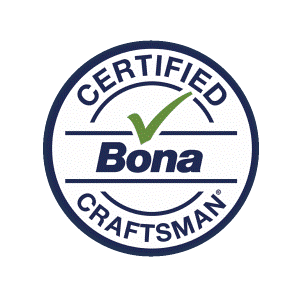Can You Have Radiant Heating with Hardwood Floors?
Radiant heating is becoming more popular as it gains reliability and affordability. A radiant heater transfers heat directly through the floor, causing an even spread of heat that can reach 85 degrees. This easy method of heating more efficiently heats up the house without moving air, which can help people with allergies. Radiant heating also eliminates the need to extend a heating system to an addition. Many homeowners might not think about heating when it comes to their hardwood floors. However, under certain conditions, radiant heating is possible – and highly effective. Read on to understand radiant heating with hardwood floors and if it is right for you.
How Radiant Heating Is Possible with Hardwood Floors
While radiant heating is a popular option, its feasibility depends on the type of system, proper installation and maintenance of hardwood floors, and type of flooring. Missing the mark on these can be detrimental to an entire project – and thus very costly.
Type of System
The two most popular radiant heating systems are electric and hydronic. In an electric system, floors have built-in electric cables or conductive plastic that transfers heat. Electric systems are cost-effective only in a house that retains heat well. In other words, buildings with concrete floors can “store” heat so the system can shut off during the day. However, houses that lose heat quickly will overspend on an electric system.
Due to its low electricity usage, the hydronic system is more cost-effective than the electric. The system simply pumps water from a heater through tubing under the floor. Energy sources can include solar water heaters, boilers fired by oil, gas, or wood, or a combination of the two.

Your floors should be enjoyed and with radiant heat you can do just that!
Pre-Installation Requirements
Once the system is in place, the wood flooring can be installed. To avoid shocking the wood, homeowners should acclimatize the boards at 65 to 70 degrees two weeks before installing. This protects against warping, cracking, or separation of the boards.
Maintenance Requirements
When the flooring is acclimatized, it can be installed. However, various wood types require different humidity levels for proper maintenance. Too little humidity can cause the wood to contract, resulting in gaps between boards, while too much humidity causes warping and cracking. On average, 30 to 50 percent relative humidity is an appropriate level. Refer to the NWFA Moisture and Wood guide for more specifications.
Type of Flooring
The type of flooring a homeowner chooses impacts the success of radiant heating installations. While solid wood flooring might shrink or crack easily, some remodelers prefer it. When choosing solid wood, homeowners should use narrow boards to minimize temperature effects.
Engineered wood is constructed of plywood with a wood veneer. This construction is more stable and therefore more resistant to temperature changes than solid wood. Thus, engineered wood is typically preferred for use in houses with radiant heating.
Install the Right Floors from Elite Hardwood Flooring
To properly install radiant floors and avoid project disaster, homeowners must not only select a system, acclimatize the wood, and maintain proper levels of humidity, but also choose the right type of flooring. While Elite Hardwood Flooring does not install radiant heating systems, they provide premium hardwood flooring options. Need to install quality hardwood flooring? Contact Elite Hardwood Flooring today to view hardwoods.


